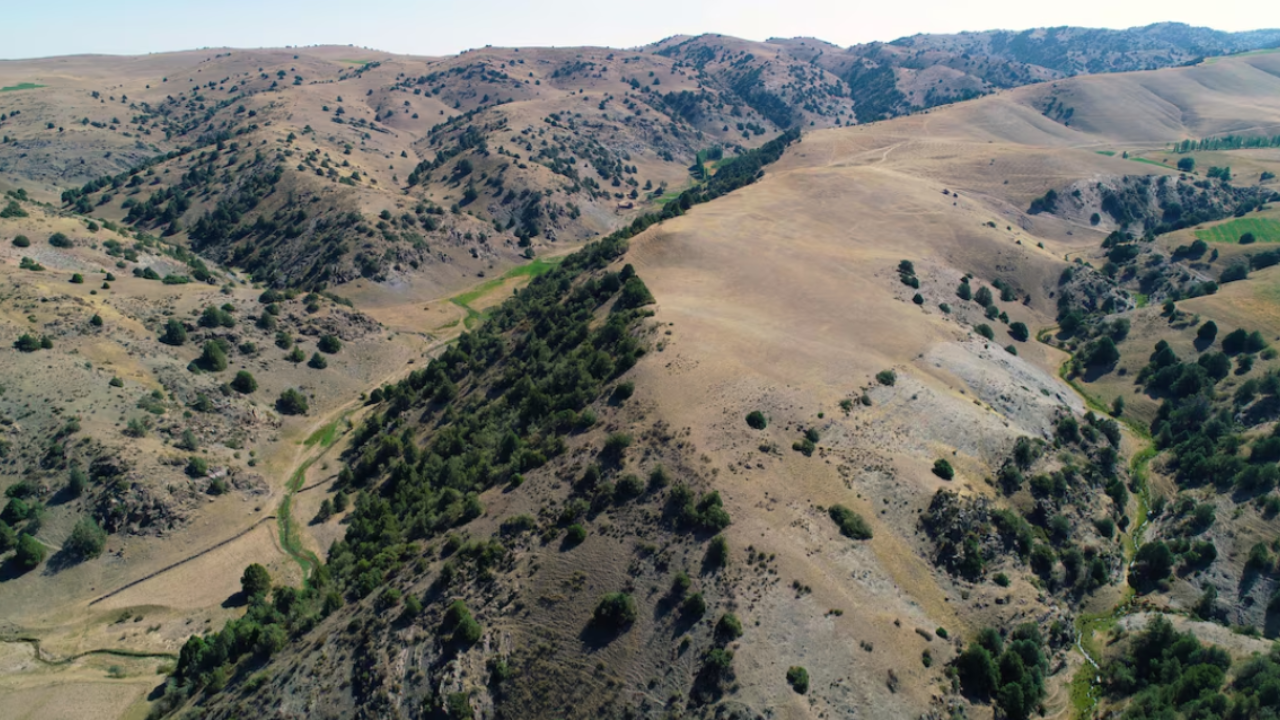
©Michael Frachetti/Handout via REUTERS
Pre-reading questions:
I will read each question. Then, please answer them.
講師がそれぞれの質問を読むので答えましょう。
- Have you ever heard of the Silk Road?
- Have you ever visited a historical site?
Vocabulary:
I will read the words, meanings, and sample sentences. Then, repeat after me.
単語、意味、例文を読みます。講師に続いて音読しましょう。
- apart /uh-PAHRT/
- likely /LAHYK-lee/
- landscape /LAND-skeyp/
- cultural /KUHL·chuh·ruhl/
- exist /ig-ZIST/
[adverb] – separated by a distance or by time
The two houses stood apart from each other by a wide garden.
[adjective] – to be probable or expected
It is likely that it will rain tomorrow based on the weather forecast.
[noun] – a large area of land, especially in relation to its appearance
The landscape was breathtaking, with mountains and valleys stretching as far as the eye could see.
[adjective] – relating to the habits, traditions, and beliefs of a society
The festival showcased the rich cultural heritage of the local community.
[verb] – to be or have being; to have life or reality
Dinosaurs existed millions of years ago, long before humans appeared on Earth.
Article reading:
Please read the whole article. Then, I will check your pronunciation and intonation.
記事を音読しましょう。講師はあなたの発音とイントネーションを確認します。
Archaeologists have found two ancient cities in the mountains of Uzbekistan that were important stops along the Silk Road, dating back to the 6th to 11th centuries AD. These cities, Tugunbulak and Tashbulak, are located about three miles apart, at elevations between 6,560 and 7,220 feet above sea level. Tugunbulak was the larger of the two, covering around 300 acres and possibly housing tens of thousands of people, making it one of the largest cities in Central Asia at that time. It was likely a major steel production center. Tashbulak, smaller with a population in the thousands, is known for its large cemetery, which has early Islamic burials, showing the spread of Islam in the area. Researchers used lidar, a laser mapping tool, to discover the cities’ roads, structures, and fortifications, making it easier to explore the rough landscape. Excavations at Tugunbulak uncovered kilns and furnaces for steel production, while Tashbulak’s cemetery suggests it had cultural or religious significance. These findings show that important centers of power existed beyond famous cities like Samarkand.
True or False:
Read the sentences and identify if they are true or false based on the article.
文章を読んで、記事に基づいて正誤を答えましょう。
- Tashbulak was the larger of the two cities found in the mountains of Uzbekistan.
- The cities of Tugunbulak and Tashbulak were important stops along the Silk Road.
- Tugunbulak covered about 100 acres of land and had a population of thousands.
- Researchers used radar technology to map the cities and discover their structures.
- The two cities are located about ten miles apart from each other.
Fill in the blanks:
Choose the correct word from the table, then fill in the blanks.
適切な言葉を選んで空欄を埋めましょう。
| apart | likely | landscape | cultural | exist |
- The project is __________ to be completed ahead of schedule.
- She enjoys exploring the __________ differences between various countries.
- The pieces of the puzzle lay _________ on the table, waiting to be assembled.
- Many species __________ in various habitats around the globe.
- Urban development has changed the __________ of the city dramatically over the years.